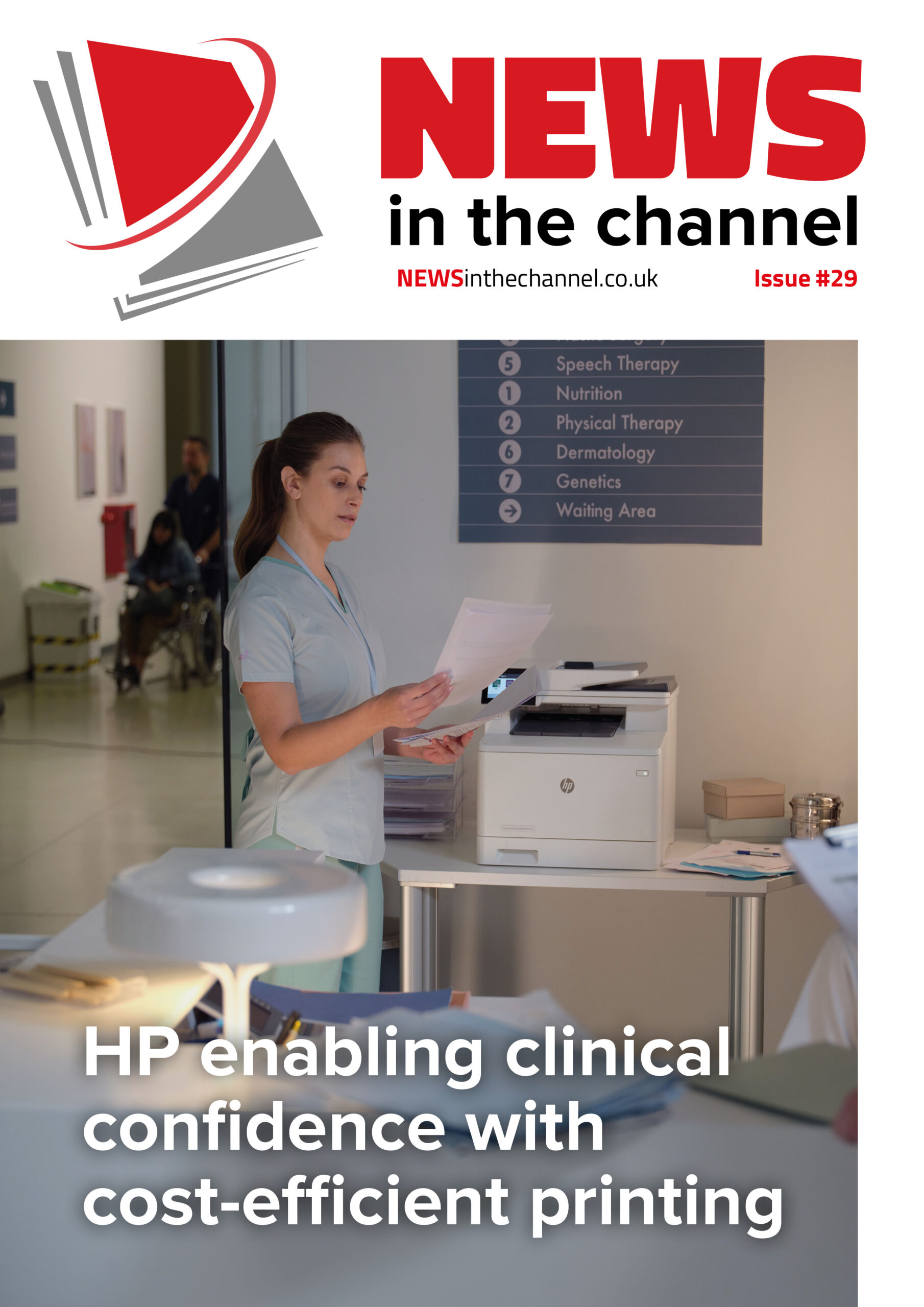The need for reliable power supplies has never been greater, thanks to more business than ever being conducted online – so uninterruptable power supplies such as those provided by Eaton are becoming crucial to business.
This winter has seen the UK battered by numerous storms – indeed, there have been 10 named storms at the time of writing since September 2023, compared to just two the previous year.
Storms present all sorts of dangers to businesses – and one of the biggest is through causing a power outage.
Power outages are becoming an increasingly severe event for businesses due to more mission critical operations than ever being carried out online. Not only can work be lost when the power goes, it also means a business often cannot function until the power returns.
The effects of a power outage can be significant for businesses. A single hour of server downtime can cost businesses more than €300,000 (£257,000) – and can reach up to €5 million (£4.27 million) or more in some cases, according to the ITIC 2021 Global Server Hardware, Server OS Reliability Report.
This is why more businesses than ever are now turning to uninterruptable power supplies (UPS) to mitigate against this risk.
A UPS system is an electrical apparatus that provides emergency power to a load when the input power source or mains power fails. A UPS system performs three primary functions: conditions the incoming dirty power from the utility company to give you clean, uninterruptible power, provides ride-through power to cover for sags or short-term outages and enables seamless system shutdown during a complete power outage.
UPS provides reliability and peace of mind. In the event of a blackout, UPS back-up will switch from mains supply to batteries, enabling systems to continue running until regular power is restored. It means employees can carry on working from where they left off, no data will be lost, and downtime is prevented.
The impact of the digital transformation
The need for UPS is set to continue to grow as the IT sector heads into a transformative period in 2024 defined by a myriad of trends and challenges.
Digital transformation is one of the key priorities for the EU and the digital decade initiative sets out the EU targets for this until 2030. The IT distribution landscape has undergone a digital transformation, with data becoming ever more important, particularly in gauging consumer behaviour and market trends.
The need for a new approach to power protection
This means that protecting and managing the supply of power to these resources will be critical, wherever they are located.
Traditionally, an organisation’s hardware and software, along with the power and cooling equipment needed to keep it running, would be in one central location, like an office building or data centre. Today, though, a growing need for these resources to be located closer to end users means they are increasingly dispersed across multiple locations, such as branch offices, colocation data centres and private and public cloud environments used by home workers.
The benefits of decentralising computing capabilities in this way are manifold, and include reducing latency, enhancing scalability, and guaranteeing optimal performance. Indeed, the ability to process data at the edge allows organisations to access real-time insights and take responsive action to any situations that may arise. In moving computing resources closer to the end user, distributed IT infrastructure can empower businesses with greater agility, efficiency, and competitive advantage in an ever more complex, interconnected world.
Protecting power supplies
Whether it’s legacy or the latest development, the efficient running of an organisation’s technology depends on a consistent and reliable supply of power. But businesses operating distributed IT environments face the constant threat of outages, and without staff on hand to manage and mitigate unplanned power events, these outages can cause lasting and costly downtime for critical equipment. It is vital, therefore, that the power supply to distributed IT infrastructure remains protected at all times, regardless of where it’s located.
This is something that cloud computing vendors and colocation data centre operators, concerned with maximising the scalability, efficiency and agility of their data centres, have long understood. For example, the growing adoption of distributed IT infrastructure has seen many begin replacing older, transformer-based centralised power protection systems with distributed architectures in which UPSs reside in close proximity to servers, storage and networking equipment.
Next-generation UPS
In the past, UPSs tended to be scaled to meet the demands of enterprise data centres. But, as they were hot, large and inflexible, they were unsuitable for use in distributed environments where limited floor space, and mechanical, electrical, plumbing and cooling components would be constraining.
UPS design has evolved in recent years to become more efficient, compact and adaptable. Attributes such as modularity, ultra-high efficiency, and inherent redundancy – in large and more compact UPSs alike – mean distributed power protection is now a viable option for organisations of all sizes.
The next evolutionary step
The world of IT continues to evolve. From education and healthcare to retail and hospitality, digital transformation is driving more critical infrastructure than ever to distributed IT environments as organisations seek to being data closer to their end users.
For instance, in retail, no two stores are the same. Retailers will use different point of sale and infrastructure technologies depending on the size and the nature of the individual outlet. Therefore a solution will be required for protecting every store from the potential impact of a power outlet, no matter what technology they use.
Likewise, with computing resources and IT assets widely dispersed, often across multiple geographies and remote locations, it is vital that the supply of power is managed and protected – especially when you consider that many edge facilities lack on-site IT support staff. If not, organisations risk facing potentially harmful power shortages and outages. Distributed power architecture, comprising the latest small, lightweight – often modular – UPSs, offers that management and protection. In some use cases, such as cloud computing and colocation data centres, the benefits extend further, offering greater scalability, flexibility and efficiency.
A combination of new technological developments and new post-pandemic working practices requires a new approach to IT architecture, with new and greater demands for power. In short, distributed IT infrastructure requires a distributed power architecture.
Eaton has a range of solutions that can protect office and home office set-ups from a blackout.
For home set-ups the solutions include:
Eaton 3S Mini – advanced protection for internet routers, modems, IP-cameras and IoT applications
Eaton 3S Gen2 – affordable and reliable protection for desktop computers, TV & audio and storage systems
Eaton Ellipse PRO – offers advanced protection for desktop PCs, gaming computers and pro audio.
For IT business applications the solutions include:
Eaton 5PX Gen2 – best-in-class line-interactive power protection for servers, switches, routers, and storage devices. The 5PX Gen 2 offers powerful tools to remotely monitor, integrate with IT architecture and remotely deploy and maintain a large installed base of UPSs
Eaton 9PX UPS – offers energy-efficient power protection for small and medium datacentres, IT networking, storage and telecoms, infrastructure, industrial and medical applications. Delivering double conversion protection with 40% less energy usage, the 9PX is the perfect UPS for IT and facility managers concerned by energy cost and looking for next generation power protection solutions.
More than just UPS
But often businesses need more than just a UPS, and Eaton can provide that. As part of the Brightlayer Data Centers suite, Eaton’s Distributed IT Performance Management software allows users to remotely monitor, manage and control power equipment in physical and virtual environments to ensure mission-critical IT devices keep running during a power outage.
In addition, the Cyber Secured Monitoring service, a cloud-based analytics solution for collecting and analysing data from power-infrastructure devices, enables services such as remote monitoring, health reports, and early anomaly detection to mitigate the downtime risk to critical components.
Eaton also offers Connected, which provides flexible remote monitoring service for 1ph Eaton UPS – whether it’s under warranty or not – with no obligation to renew the licence.
Conclusion
The potential impact a power outage can have on a business means it’s important to think about how to protect a business’ equipment and systems against blackouts – especially during the winter months, where increased demand on the power supply means the chance of a blackout is particularly high.
Whether it’s ensuring business as usual with UPS products – whether in offices or hybrid working environments – or helping to monitor and manage an organisation’s power usage, Eaton has the experience and the technology your business needs to survive the worst of the weather.
For more information about the UPS solutions that Eaton has available for businesses visit www.eaton.com











